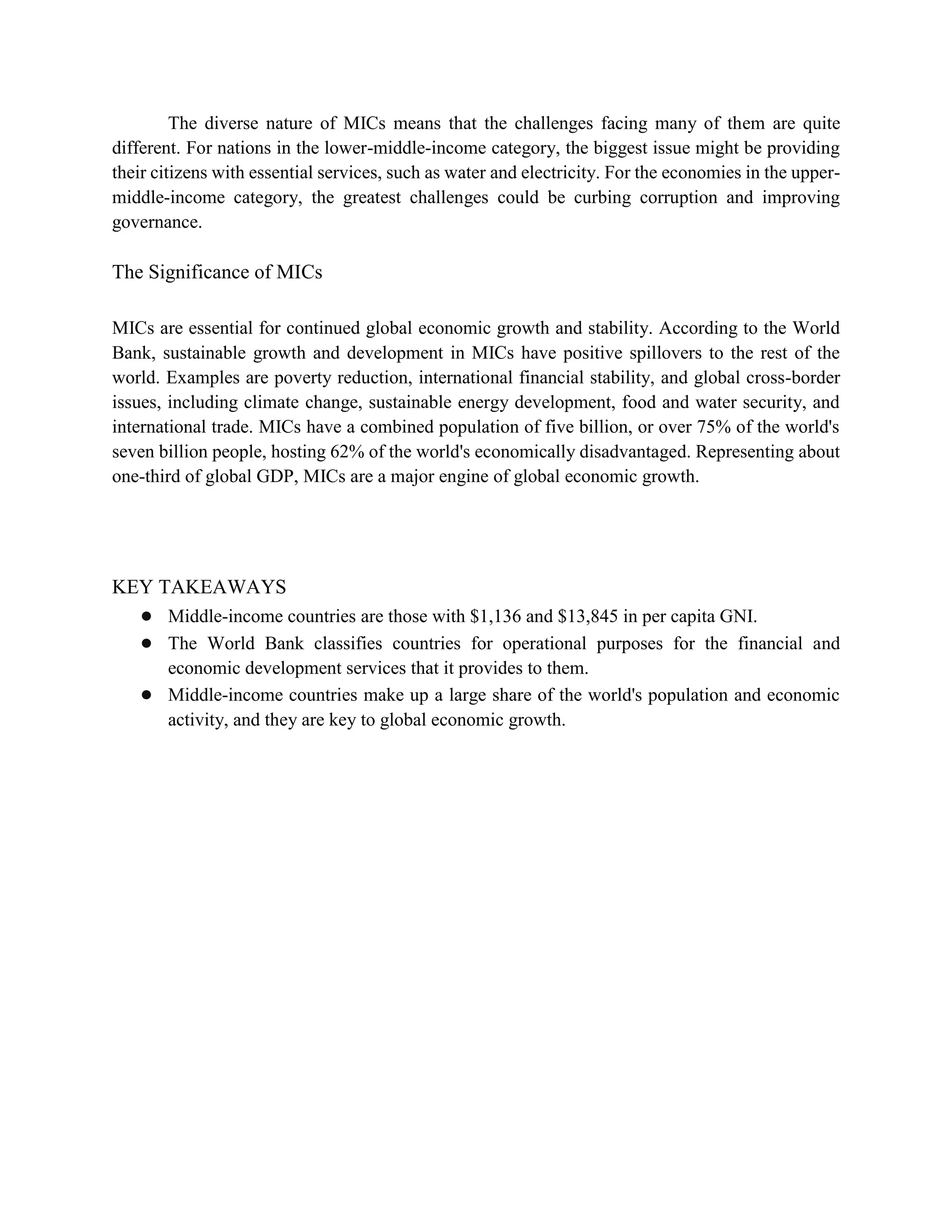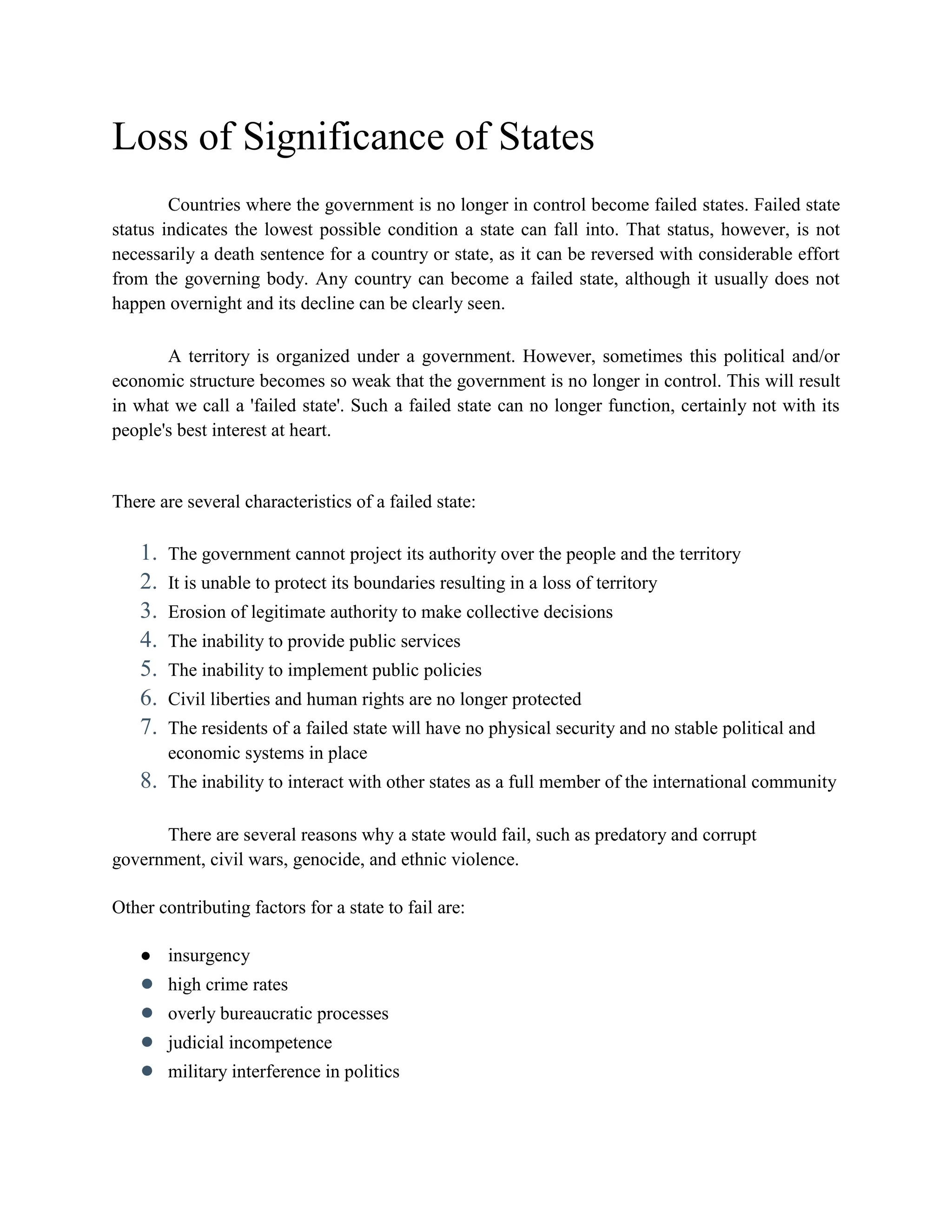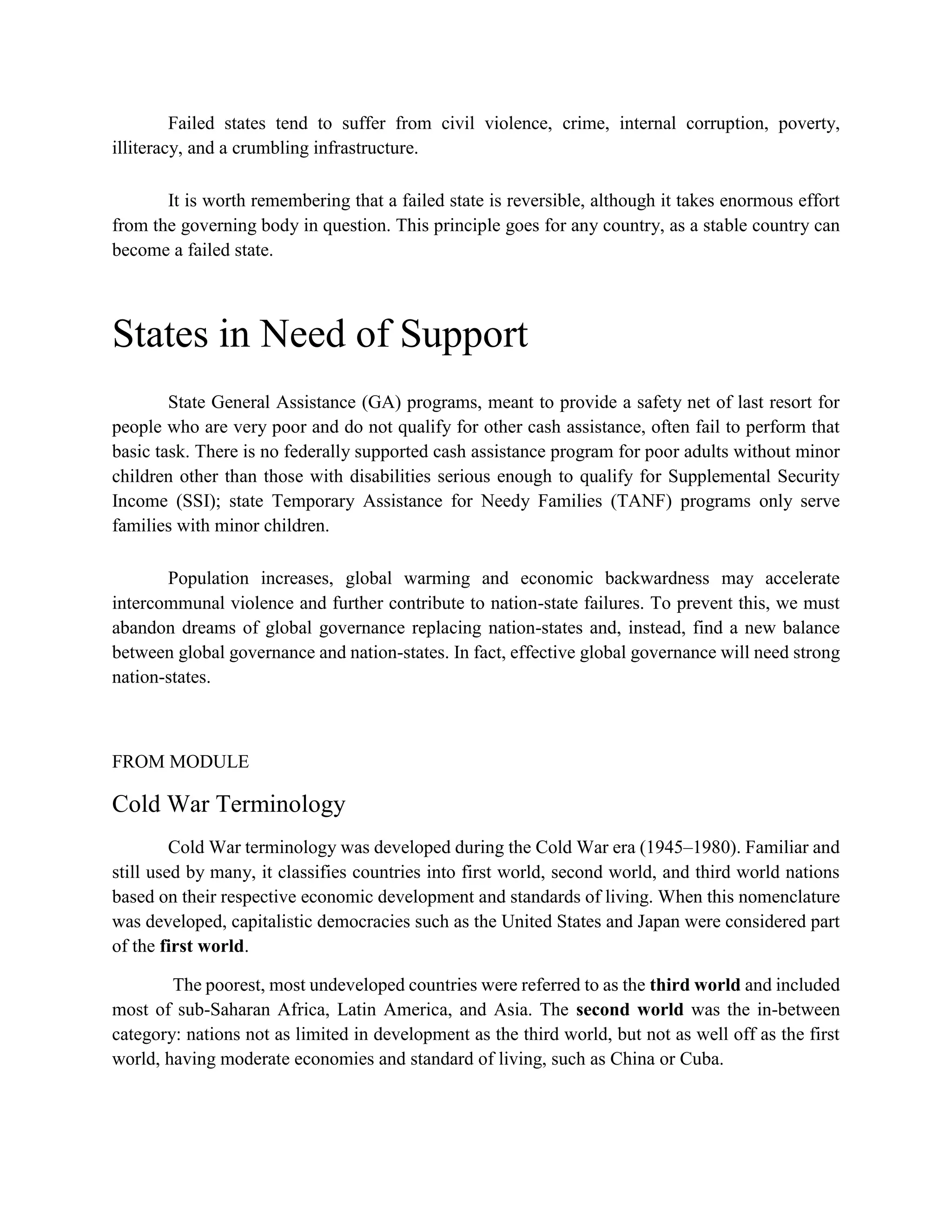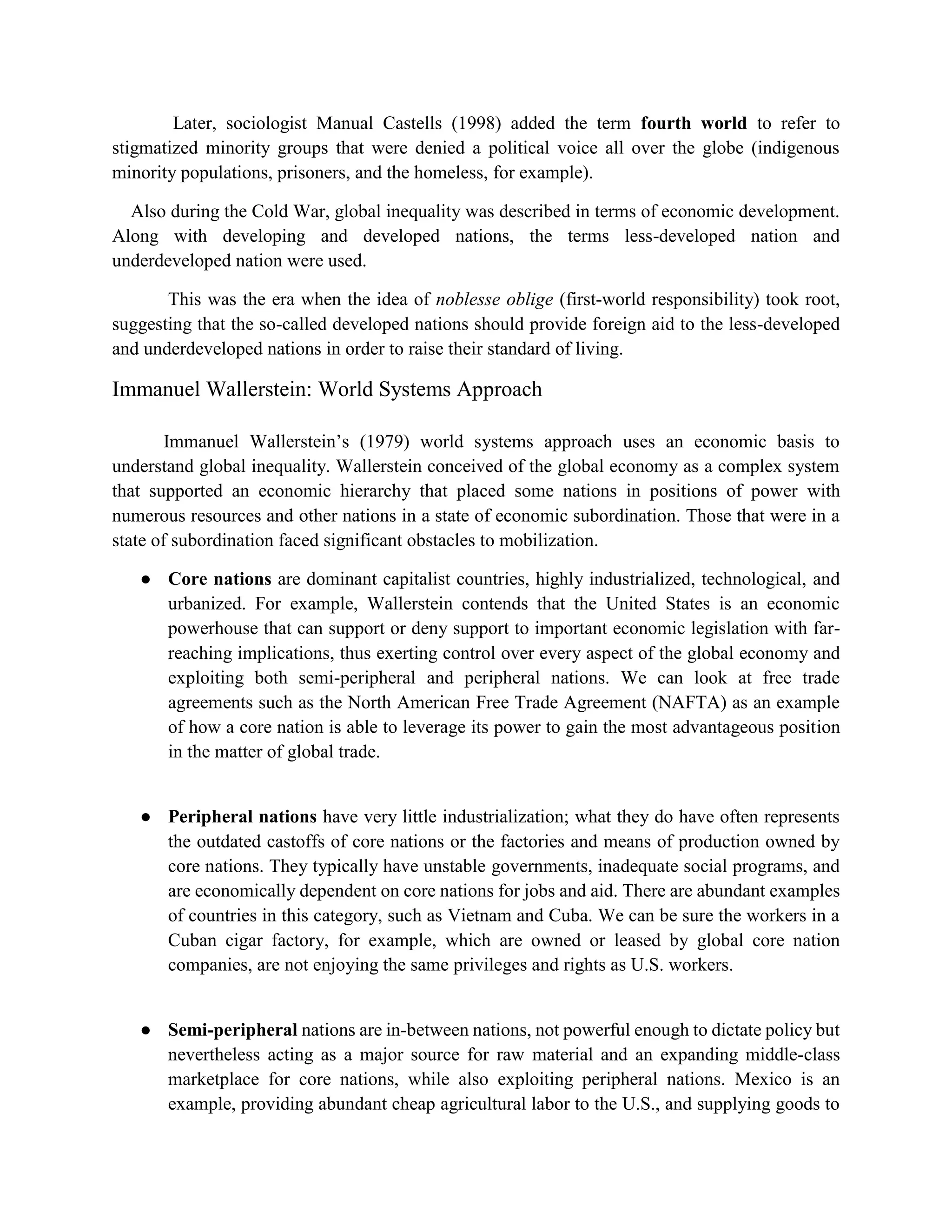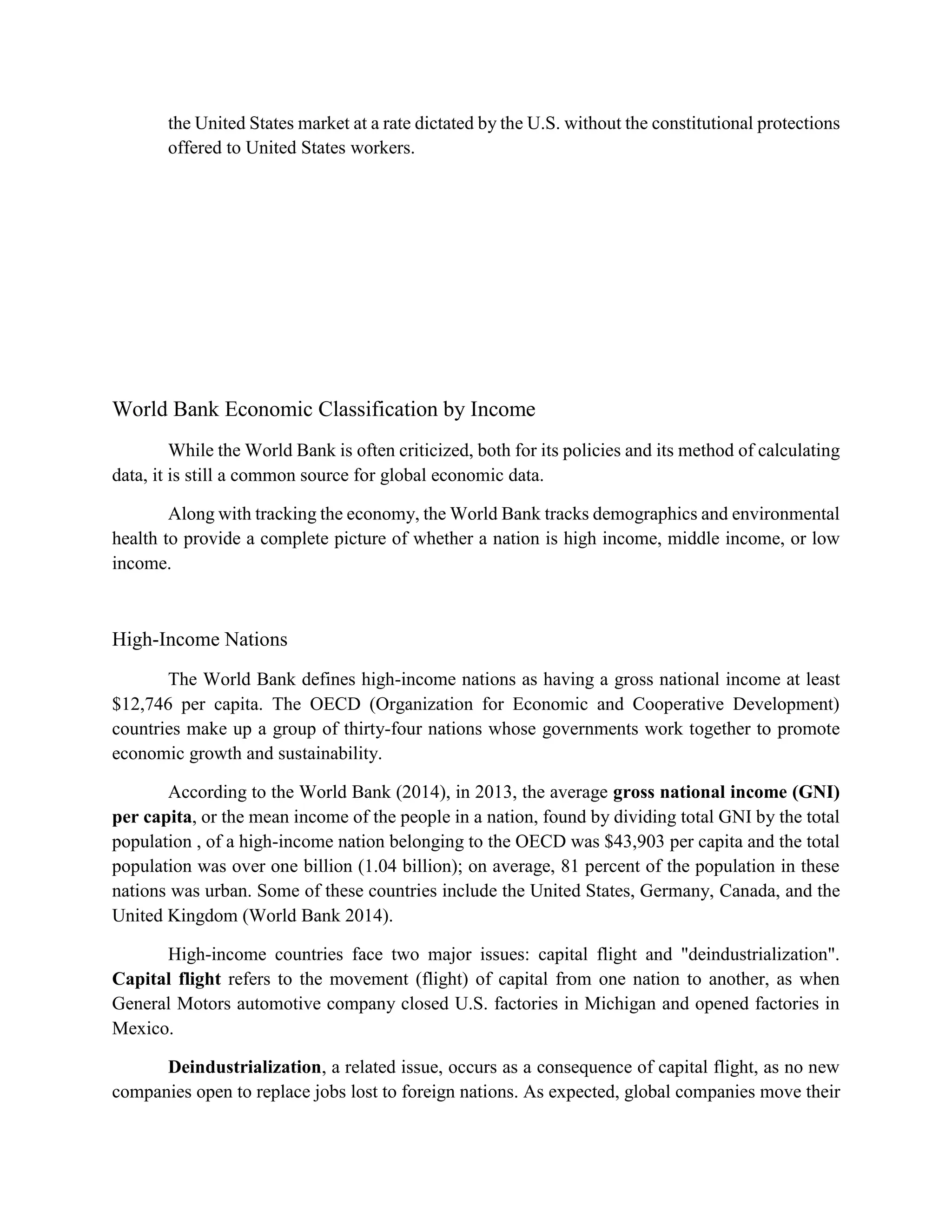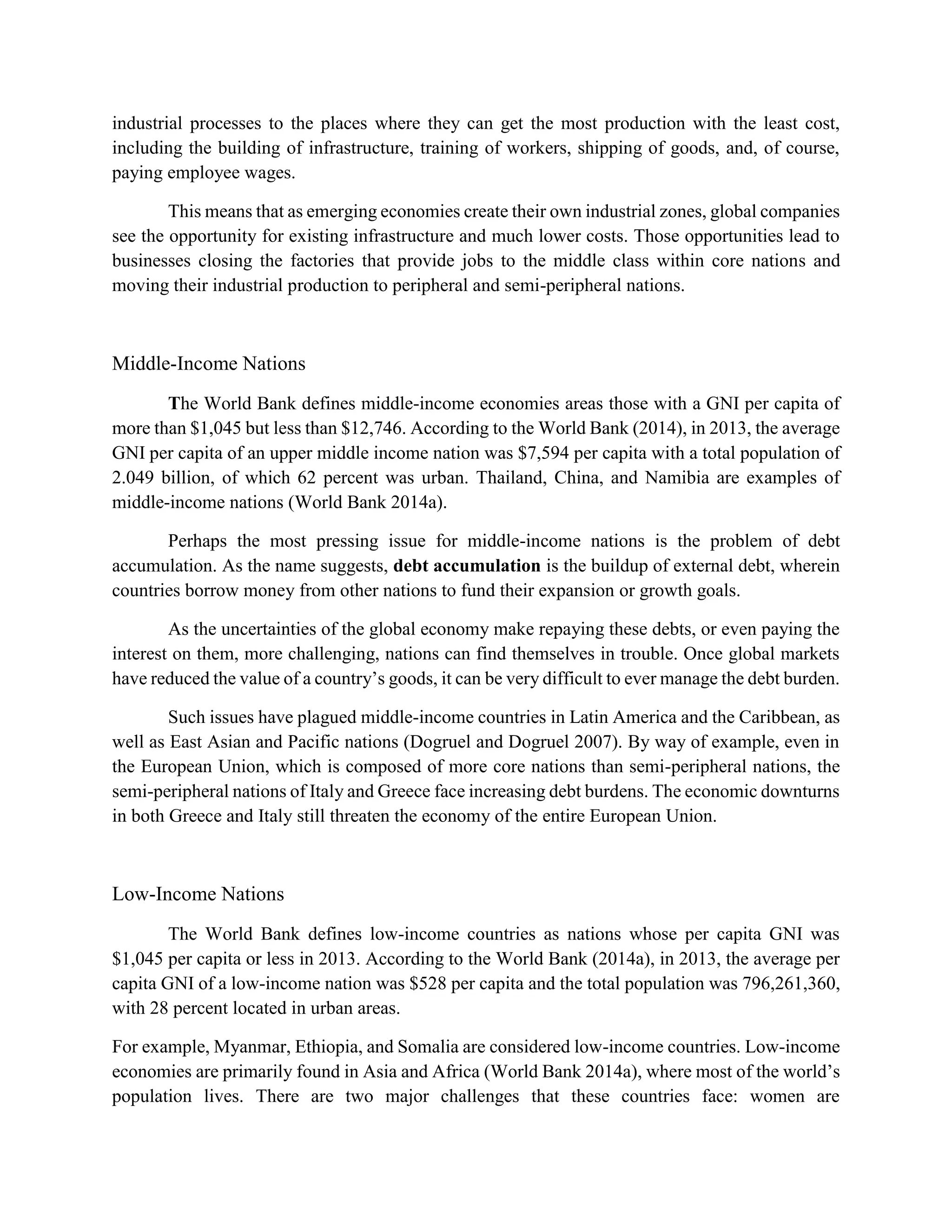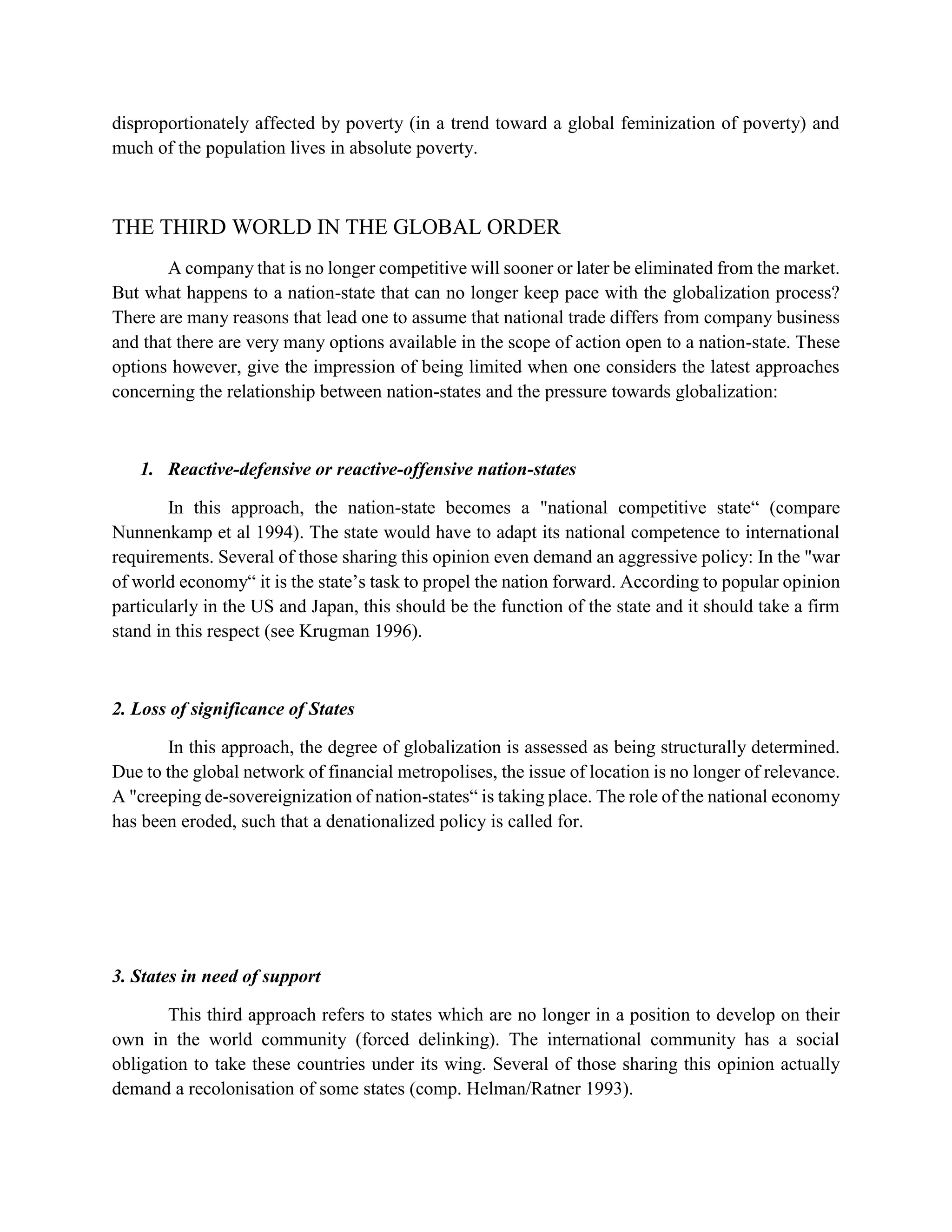Core nations control and profit the most from the world system through military, economic, and political power. They are wealthy states that exploit resources and labor from peripheral countries for their own benefit. Examples of current core powers include the United States, Western European nations, Japan, Australia, and New Zealand. Peripheral nations have limited industrialization and are exploited for their raw materials and cheap labor, resulting in underdevelopment and poverty. Semi-peripheral nations have some characteristics of both core and peripheral countries and serve as a connection between the two, facilitating trade and alleviating political pressures.
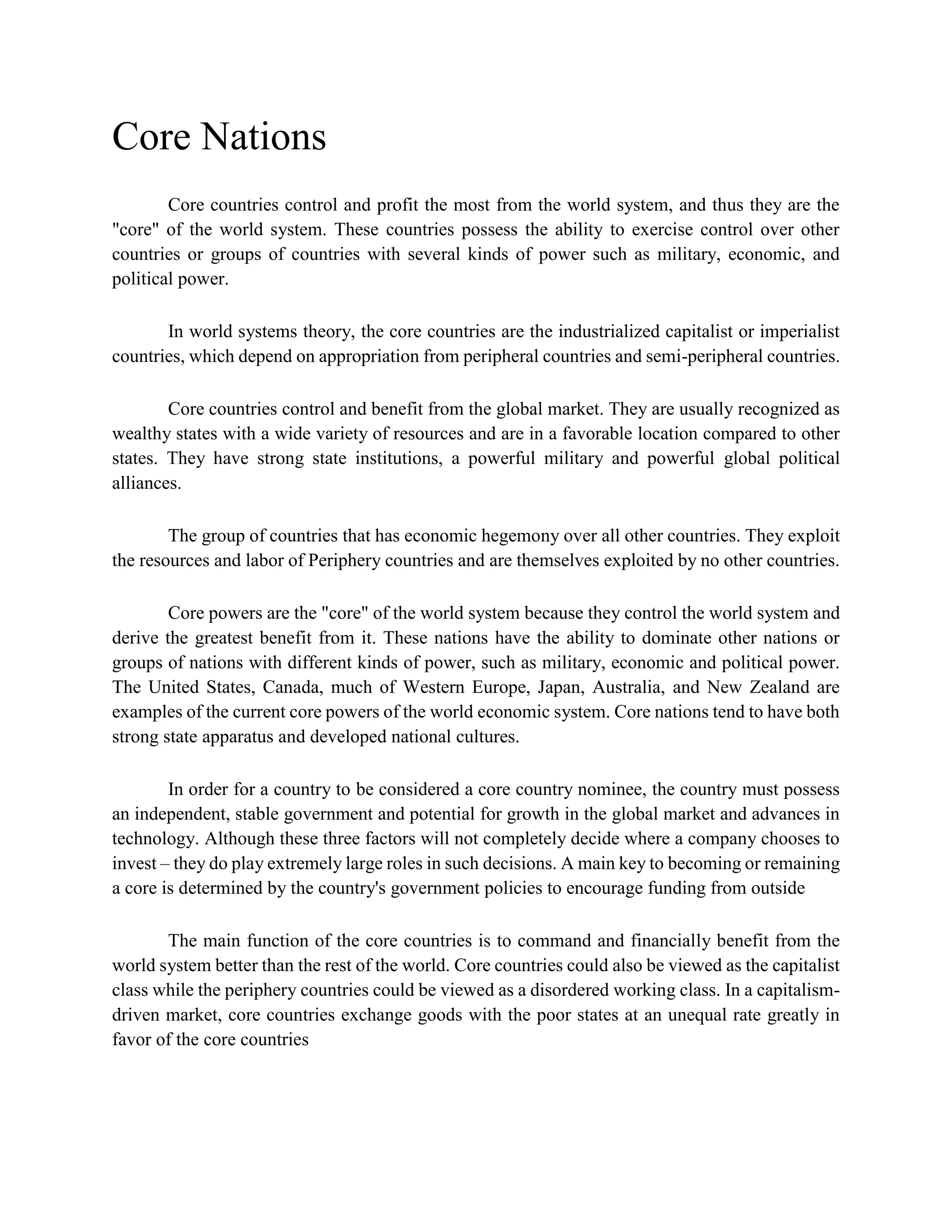
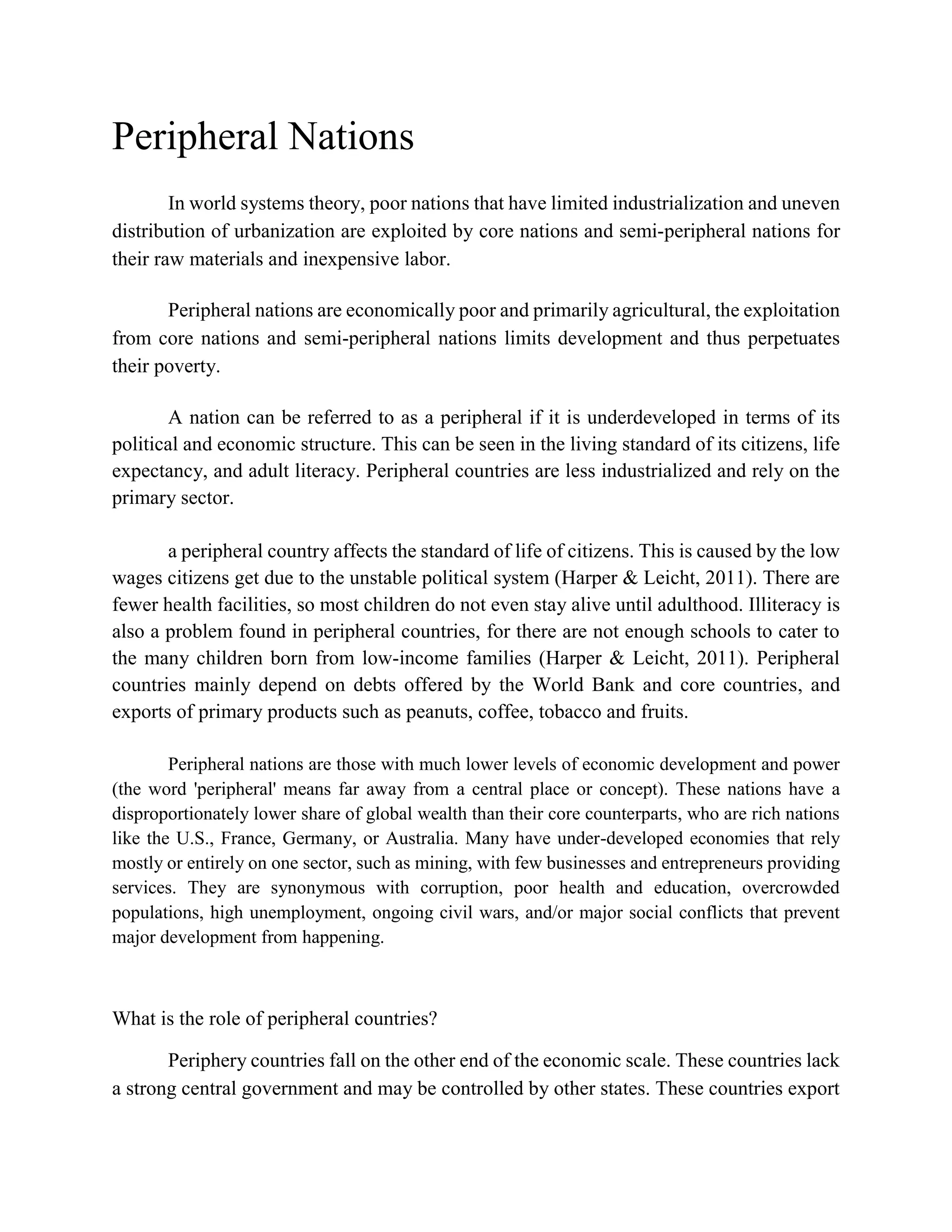
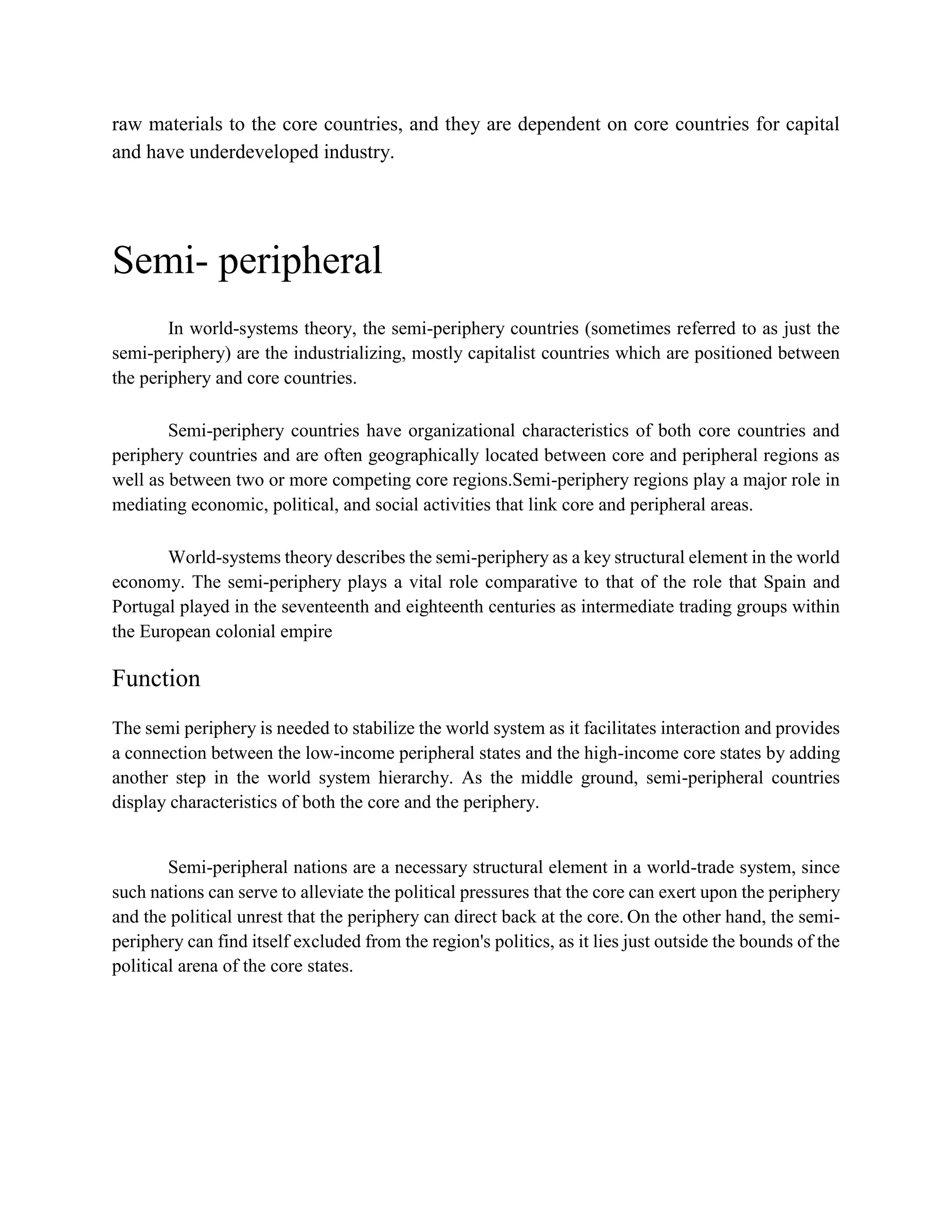
![The semi-periphery exists because it needs to divide the economic power between the core and the
periphery. Semi-periphery, referred to as the middle class by Wallerstein, is what makes the
capitalist world function because it is much like the sociological structural functionalism theory,
where norms, customs, traditions, and institutions act as "organs" that work toward the proper
functioning of the "body" as a whole. Without these industrializing countries, change will never
reach the periphery.
High- Income Nations
A high-income economy is defined by the World Bank as a country with a gross national
income per capita of US$13,845 or more in 2022, calculated using the Atlas method.[1]
While the
term "high-income" is often used interchangeably with "First World" and "developed country,"
the technical definitions of these terms differ.
The term "first world" commonly refers to countries that aligned themselves with the U.S.
and NATO during the Cold War. Several institutions, such as the Central Intelligence Agency
(CIA) or International Monetary Fund (IMF), take factors other than high per capita income into
account when classifying countries as "developed" or "advanced economies." According to the
United Nations, for example, some high-income countries may also be developing countries.
Middle Income Nations
a diverse group by size, population, and income level. They are defined as lower middle-
income economies - those with a GNI per capita between $1,036 and $4,045; and upper middle-
income economies - those with a GNI per capita between $4,046 and $12,535 (2021).
MICs are broken up into lower-middle-income and upper-middle-income economies.
Lower-middle-income economies have per capita GNIs between $1,136 and $4,465, while upper-
middle economies have per capita GNIs between $4,466 and $13,845.
MICs are a very diverse group by region, size, population, and income level, ranging from
tiny nations with small populations, such as Belize and the Marshall Islands, to all five of the
BRICS countries—Brazil, Russia, India, China, and South Africa. China and India together
account for approximately one-third of the world's population and are increasingly influential
players in the global economy.](https://image.slidesharecdn.com/conworldnotessmidterm-231116092016-950f2819/75/Conworld-notess-midterm-docx-4-2048.jpg)
